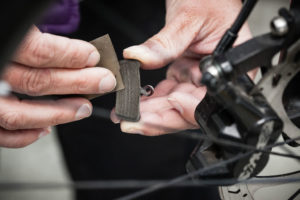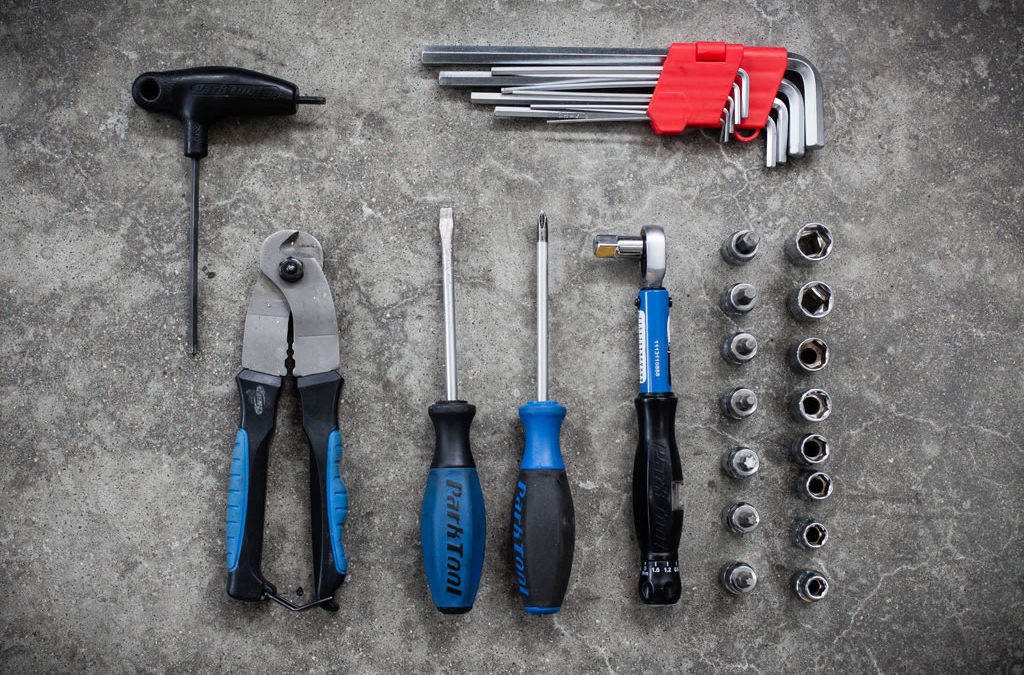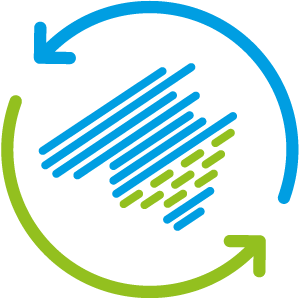There are a few very simple maintenance and repair tips to help you get a better performance from your bike and also, not to get stuck in the mountain. It is relatively easy to do the basic maintenance of your MTB and by doing so you will ensure greater durability of each of the components of your bike, which are not exactly cheap if you have to replace them.
Below we give you some basic tips on how to look after some of the most important parts of your bike without needing very specific tools and a cleaning and greasing operation to ensure a better operation of your MTB. All you need at hand are the basic tools, a degreaser, quality oil and a hose to do the job!
The basic tools for good maintenance
The first thing is to have a small set of tools. It’s not a good idea to buy low-quality tools, because you will end up buying twice, for sure. If you buy bad tools, it could possibly ruin some of the screws on your bike and you already know that many of them are not exactly cheap.
It is very important that little by little you build up a good kit of tools to have at home to do the maintenance in the best possible way and, also, another kit that you can take in your trips.
For a correct maintenance, avoid bad or inadequate tools, the result won’t be a good one.
For this reason, we encourage you to include in your budget for your MTB from time to time some tools in your shopping basket. The basic tools are a set of Allen wrenches, a cable cutter, two screwdrivers (one flat and one star), a T25 torx wrench and a torque wrench with adjustable and interchangeable dimensions.
These are the most basic. Over time you will be able to get more specific ones such as the pedal shaft or a bearing extractor
The cables and covers of the gear change, the key elements of the maintenance of the transmission of your MTB
One of the most basic tasks for the transmission of your bike to work perfectly. Very economical if you do it in a workshop or if you do it at home. If you live in an area with a lot of mud and water build-up, it is recommended that you do this maintenance task at least 2 times a year, or more if you notice that cable friction is increasing. Today, and because most upper-mid-range models come with a single chainring, all you have to change will be the cable and the rear derailleur cover. If you have the limit bolts tight on the rear derailleur (H for the small sprocket and L for the large sprocket), it is as simple as cutting the sleeves to the same size, changing the cable and cleaning and lubricating the friction points of it. With the adjustment of the buttons and / or gear change you can fine tune the change of the gears. If your bike frame is internally guided and it isn’t completely covered internally, it may take time to get the new cable in. A stand to hold the bike in different positions can help a lot, as well as using the old cable as a guide to insert the new one.
Good transmission cleanliness is essential for good maintenance.
Ideally, the transmission should be cleaned after each ride, i.e. plates, cassette, rear derailleur (especially rollers or casters) and chain. The dirt and the accumulation of particles such as sand, cause the wear of all its components to accelerate remarkably.
We recommend applying degreaser, waiting a few minutes and cleaning with hot water and a brush so that all the rest of dirt and oil are gone. If you have pressurized air, it can help a lot to eliminate, above all, the sand in the links of the chain. With a cloth you can finish cleaning it. (remember to also clean between the cassette sprockets).
Once everything is clean and dry, apply oil to the chain (one drop at each turning point of each link), run the chain through all speeds, and wipe off excess oil with a clean rag. It is better to use a low-density dry weather oil and apply it more often than a very dense rain oil that can accumulate more dirt.
It is very important that the degreaser and oil are specific to bicycles and of good quality. Above all, do not apply layers and layers of oil to the chain without cleaning it before.
Another thing, is to check the chain pull from time to time with a specific tool (digital or manual), to assess when you should change it. It not only depends on the kilometers you do, but also on the conditions of the area where you ride, the optimal lubrication and the transmission system you have. In 1Xlacaden systems wear out faster than in double or triple chainring systems.
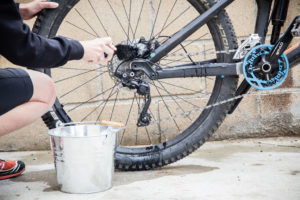
Check the screws and keep them tight.
Very easy and fast, checking and tightening your bike’s screws can prevent you from more than one problem. With a torque wrench that indicates the tightening torque (today there are many very cheap models) you can check the tightening torque of both the components and the turning points and thru-axles of your swingarm in the case of a Double suspension MTB.
There are also factory preset wrenches with a 4-5Nm tightening torque which are very common for handlebars and stems which are economical, small and very useful. It is especially important to check the stem and handlebars, the bolts of the cranks, the turning points, the derailleur hanger and the axles of the wheels in the event that they are not close to this type of lever.
It is something you can do before each time you go out and it will take you a couple of minutes

Adjusting the steering.
The steering is one of the easiest points to keep on your MTB, but also one that we usually forget. Disassembling the parts, cleaning and lubricating it is a matter of minutes. Bear in mind that the bearings are highly exposed to mud and water (especially the lower one) and it is advisable to check them at least once a month.
In medium and high ranges of MTB, bearings are sealed and of high quality, which will last much longer. But if we clean them often and grease them lightly, they will have a greater durability. It is important to use a torque wrench for the power screws (usually 4 or 5 Nm) and the top cap of the steering that needs a very slight adjustment of about 1-2 Nm.
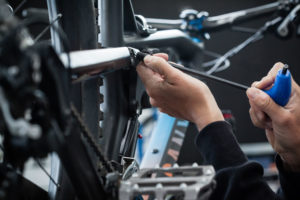
Maintain control of ball bearings
This is one of the most laborious sections to maintain, since depending on the type of hub, specific tools are required (cone wrenches and bearing extractors) and it requires a somewhat high level of mechanical knowledge. It is not complicated, but without the proper tool you can damage some of the fundamental parts of the system.
Changing the bearings of a hub is something that is done very often, but cleaning the casings and bearings externally and applying a little grease is something that does not take long and will ensure they last longer .
While externally cleaning the hub bearings, you must clean the thru-axles, grease the ends of the lever of the hubs and clean the sand threads, so that they are not damaged. You can also control how the bearings turn by hand, and if the bearing gets stuck or it feels like it has some soft sand, it might be time to change it.
Fork and shock absorbers of your MTB, normally a professional job, but the basic maintenance is your responsibility.
The maintenance of forks and shock absorbers is recommended to be carried out in authorized shops or in the official technical service. Although there are many online tutorials that can show you all the steps, they are very delicate parts of some components and, if you do not have a good mechanical training and all the specific tools, it will be difficult for the fork to be 100% checked out..
The usual basic maintenance consists of cleaning the dirt that accumulates in the seals, greasing them lightly to improve friction with the bars and cleaning the bars themselves so that they are not scratched by particles deposited in the seals themselves.
Similarly, the adjustment dials can be cleaned (an air compressor makes your task much easier), to remove dirt and dirt that has accumulated, but do not use it in the seals themselves. To keep the seals much cleaner, you can use a plastic fender that sits on the fork bridge. They are very economical and avoid a lot of mud and sand.
If you use tubeless wheels you can forget about punctures, but not about maintenance
The tubeless system, which has been notably becoming more fashionable, not only helps you prevent punctures (the internal liquid, mostly latex-based, is responsible for closing possible holes in the tire), but also allows you to ride with pressure lower and improve grip and braking capacity, in addition to providing a considerable comfort.
Tubeless liquid deteriorates and dries with use, especially in very high temperature areas. It is advisable to change it and clean the inside of the rim and tire at least once a year. If you do it more times, it is always a good idea. When you don’t, the fluid builds up in the tire and can form a very dirty paste that is difficult to remove. For this reason, it is also important that you put the recommended amount of liquid.
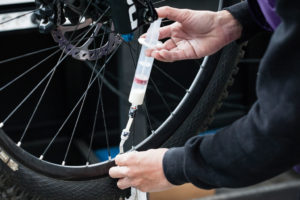
Basic and important maintenance: the pivot points of the suspensions
In full-suspension MTB it’s very important for the turning points to be kept ,with the recommended tightening torque, clean and greased. Today, many of the full suspension models on the market have very elaborate pass thru connectors that dismantle very quickly without specific tools.
It is very easy to remove these shafts, clean them and lightly grease them. There are other cases in which the turning points come with a screw that also acts as a cover, which in many cases carries a bit of specific glue for screws. If the conditions are good, in which you go out with your bike and are not in water and mud, doing it once a season will be enough.
You can also take advantage to clean them well and change some bearings if necessary, once a year. Don’t forget that to extract bearings from a rocker you need suitable extractor tools. The hammer is not always the best solution….
Maintenance of brake discs
Disc brakes have fairly simple basic maintenance to perform. The main thing is to check the condition of the brake pads. If they are worn, they will need to be replaced and if not, it is best to clean the braking surface with a fine sandpaper. With use, the surface crystallizes (becomes shiny) and the braking capacity decreases. Lightly sand the paper until the shine disappears.
In the same way, the disc can be cleaned with special products, in addition to re-tightening the screws. In the event that the pistons do not return to their proper position or the handle touch is very hard and spongy, a complete bleeding of the system will be necessary.
There are complete kits to do it, but it requires a certain mechanical knowledge. If you do not feel capable, do not hesitate to take the bike to your store, where they will make you a professional bleeding following the manufacturer’s instructions. If you do it once a year, you will avoid surprises mid-season.
